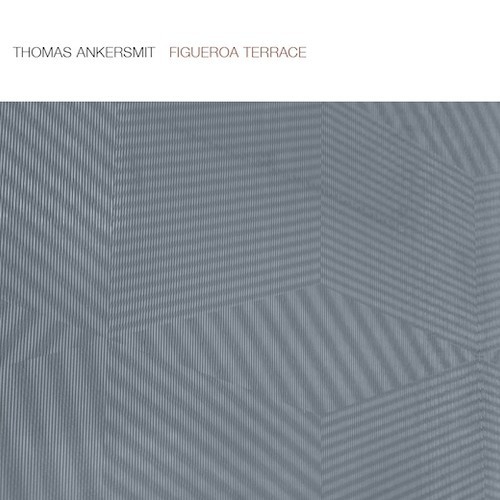Figueroa Terrace is the result of Dutch-born, Berlin-based artist Thomas Ankersmit being invited to CalArts electronic music studios in Los Angeles to record new music with their recently restored "Black Serge" modular synthesiser. This instrument was one of the original iterations of the modular system developed in the 1970s by Serge Tcherepnin, who was a professor at CalArts at the time, as an alternative to the prohibitively expensive Buchla synths. For the last decade or so, Ankersmit has been using a descendent of Serge system as his main instrument, both live and in the studio, testing the limits of rooms and sound-systems with controlled barrages of "infrasonic vibration, otoacoustic emissions and highly directional projections of sound".
The results of Ankersmit’s engagement with his personal instrument’s predecessor is captured in a single, 37-minute long track of shifting sonic landscapes. Density seems to be the primary concern, with passages of intense activity giving way to lone, whispery tones that hang ethereal in vacated space. The slow builds that come to fill this space are what makes the record so exciting, particularly for its last, ragged rush toward climax.
The opening section, a buzzing hive of micro-sound lasting about three minutes, drops away to be replaced by a pure tone not quite high enough in frequency to annoy loitering teenagers in public spaces, but close to it. That glistening tone, far from pleasurable, demanding in its extremity, fades to silence and the buzz begins again, this time with the sound of single insect moving about the place. Noise corrupts and then the high tone again, swinging madly from left to right. In these opening five minutes, Ankersmit makes full use of the stereo field to define the width of the work, the horizontal axis, while the extreme high and low frequencies mark the limits of the vertical.
If these mathematical elements give us two dimensions, then it’s the sheer physicality of the sounds that give us a third and bring the whole affair to life. The warmth of the first sub-bass tone that appears, and upon which Ankersmit ushers in the gloriously soft second quarter of the piece, is stunning. That opening buzz, the lustrous drones, the slashes of barely-controlled noise; there are many moments here where even the most technologically agnostic listener couldn’t but be awed by the presence and the weight of the sounds emitted by the Serge’s hulking mass of knobs, circuitry and patch cables. For those already burdened with a modular fetish, Figueroa Terrace will serve as further proof that a system like this is less an instrument than an organism.
For most of the piece, Ankersmit’s restraint is laudable. The patient movements between sections, the careful positioning of each element within the field, the expertly-crafted push towards the limits of audibility, these decisions define the work up to a certain point. For the last ten minutes however, it feels as if Ankersmit cuts loose, and the waves of increasingly intense sound repeatedly washing up against the ears become filled with a joyous energy. The final, long swell into density is as raucous as a work like this is ever going to get, with Ankersmit pulling the plug just as the whole piece is about to burst at the seams. It’s an electric moment, a reminder that there can be a real, thrilling vitality in an area of music often seen as the sole preserve of chin-stroking academics and engineers.
In the moments of silence after the track finishes, I realise that it’s the considered restraint of the first twenty-five minutes that gives the final flourish its dramatic power. Working at the edge of audibility, in terms of both frequency and dynamics, Ankersmit engenders a certain type of listening. It’s an all or nothing situation; either engage fully or turn it off. Assuming you choose engagement, the piece drags you in and pushes you in different directions; opening you up, exposing, making you vulnerable. Then, with a surprising and almost violent swiftness, the ante is upped and the effect is overwhelming. Ankersmit makes this ancient beast of an instrument breathe, giving it life and, finally, teeth.


